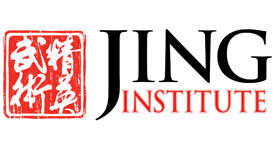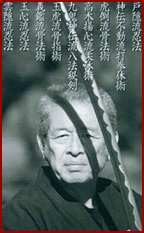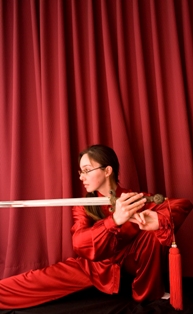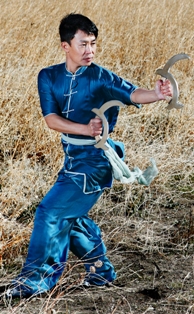|
|
||||||||||||||
|
||||||||||||||
|
||||||||||||||
|
||||||||||||||
There is no age limit on martial arts. Whenever you start is whenever you will begin enjoying martial arts and the great benefits that they bring. Start now.
|
||||||||||||||
|
JING
Culture In our early years, JING Institute
of Chinese Martial Arts & Culture and Bujinkan Taka-Seigii Dojo jointly held a Cultural
Seminar/Workshop every month in the Asian Cultural
Arts. These days, we hold weekly Cultural Classes for our young After-School and Camp students. Below is a list and brief description of some of our classes.
If you have an interest in any of the topics below, feel free to email Jing Jing for more information.
Chinese and Japanese
Culture Classes
Abacus 算盘
Ancient cultures had
advanced mathematics, but they didn’t have
calculators, so, how did they do it? And why are
Asians known for being good at math? The answer:
the Abacus. Skill with the abacus allows people to
better understand numbers and number manipulation;
using the abacus allows quick and easy addition,
subtraction, and multiplication (and, to a lesser
degree, division); and great skill with the abacus
trains the mind to the point that the physical
abacus can be relinquished for the mental abacus, ie
doing complex math in your head! In this class, we
learn the history and development of the abacus, and
practice using the abacus for addition, subtraction,
and multiplication. To
learn more about the abacus, please
visit my favorite online tutorial,
ABACUS: MYSTERY OF THE BEAD, or
check out some good books, like
Kojima, Takashi. The Japanese Abacus: It's Use
and Theory. Rutland: Charles E. Tuttle Company,
1954.
Dilson, Jesse. The Abacus: A Pocket Computer.
New York: St. Martin's Press, 1968.
Anime Drawing
画漫画
The characteristic
style of Japanese Animation has captured the hearts
and minds of millions worldwide, but it is always
associated specifically with Japan. What makes
Anime-style drawing unique? How did it develop? In
this class, we learn the history and development of
Japanese Animation, and practice drawing!
Archery
射箭
Before there were
firearms, there was archery. The Asians had a
distinctive style of archery, which they developed
over thousands of years. In this class, we briefly
learn the history and philosophy of archery in Japan
and China, and then we go to the range and practice
pulling bows and loosing arrows! You can read more about
Chinese and Japanese Archery on my
Ultra-Brief
Introduction to Archery!
Calligraphy
书法
As Yin is the pair
to Yang, so Chinese Calligraphy is the pair to
Chinese Martial Arts. In Asia, it is said that much
a person’s character can be seen through their
handwriting; as such, it has always been an integral
part of a cultivated person’s education that he or
she learn calligraphy well. Even today, Calligraphy
is used as a form of meditation, artistic outlet,
emotional release, and personal cultivation. In
this class, we learn the history and philosophy of
Chinese and Japanese Calligraphy, and most
importantly, we practice doing Calligraphy.
Chinese
Brush Painting
国画 The
study and practice of Chinese Brush Painting can
teach you much about the history and philosophy of
China. Class
will cover:
Chinese Paintings vs Western Painting
Appreciation of various types of Chinese Brush
Painting,
including
Landscape Painting and its implications for
Chinese philosophy;
Flower-Bird painting and paintings that combine
Poetry, Calligraphy, and Painting;
Impressionistic Paintings; and
Detail Painting.
Hands-On practice! You can read more about
Chinese Brush Painting on my
Ultra-Brief History of
Chinese Brush Painting essay!
Chinese Cooking
中国菜
In this class, we
get together and cook! Students will learn the
history and significance of the dish they are
making, and we will make the dish from scratch.
Chinese Historical
Museum tour
圣地亚哥中华历史博物馆
JING and Bujinkan
join the San Diego Chinese Historical Museum on a
walking tour to explore Old Chinatown and the
Japanese and Filipino neighborhoods in San Diego's
old Stingaree district. We learn and see the
history of Chinese and Japanese communities in our
very own city.
Chinese Language
中文
China holds more
than one-quarter of the world’s population, and
China’s GDP is the third largest in the world… and
still growing. It behooves everybody to gain at
least a basic understanding of the Chinese language,
and it is an even better idea to learn Mandarin
Chinese fluently!
Chinese Medicine and
Herbs
中医
Modern medicine is
just starting to accept Acupuncture as a valid form
of medicine, but Traditional Chinese Medicine has
been used and developed for millennia. This class
covers the principles of Chinese Medicine and its
approach to maintaining good health and sickness
prevention, and introduces various modalities used
in Chinese Medicine, including Acupuncture, Chinese
herbs, Gua Sha, Cupping, food therapy, various forms
of Chinese Massage Therapy including An Mo, Tui Na,
Dit Da, Acupressure, and Dup Kwut , etc.
Chinese Music
中国音乐
Chinese music has a
particular sound and philosophy, as well as a
plethora of instruments and styles. This class
introduces some of the history and philosophy of
Chinese music, and offers students live performances
of traditional Chinese instruments, including
Guzheng and Guqin. One
of the best articles I have ever read about Chinese
music is an interview of
Liu Fang, renowned Pipa and Guzheng musician, by
Paula E. Kirman, June 24, 2001.
Chinese Opera
戏曲
Chinese Opera is a
perplexing theatrical form to almost everybody
except those millions of people who love it
fiercely. The face painting is bizarre, the
costumes are extreme, the singing is not what we
typically call “sweet”, and what in the world are
acrobatics doing in Opera? On top of that, each
region of China has its own unique style of Opera.
In this class, students will learn about the
different types of Chinese Opera, the meaning of the
face painting and costumes and acrobatics, and what
makes “good” singing. After this overview, we will
focus on one type of Opera and show students why
Chinese Opera earns such love and devotion.
Chinese Painting国画
Chinese painting is
one of the oldest continuous artistic traditions in
the world. Painting in the traditional style is
known today in Chinese as guó
huà
国画,
meaning 'national painting'. Traditional painting
involves essentially the same techniques as
calligraphy and is done with a brush dipped in black
or colored ink; oils are not used. The two main
techniques in Chinese painting are: Meticulous -
Gong-bi (工筆),
often referred to as "court-style" painting; and
Freehand - Shui-mo (水墨),
loosely termed watercolour or brush painting. In
this class, we will learn a brief history of Chinese
painting, learn about the different styles of
Chinese painting, and take ink and brush to
traditional rice paper to create our own
masterpieces of Chinese painting!
Dim Sum
点心
/ Yum Cha
饮茶
In this class, we
all go out to experience “Yum Cha” (“drink tea”), a
dining tradition from Southern China. Dim Sum
(“touch heart”) is the name given to the type of
dishes served with the tea: small and snack-like.
The tea is considered a healthy (and delicious)
digestive aid, and should be drunk hot and straight
– no ice, no sugar, no milk, no lemon. Yum Cha is
typically something for family or good friends to do
on a weekend morning/early afternoon, similar to
going out to brunch in American culture.
Read
more about Dim Sum on my
Dim Sum / Yum Cha
essay!
Go, the Game / Wei
Qi
围棋
Go is a strategy
game with over 2500 years of history. Go originated
in China, and has since become wildly popular
throughout Asia, and is slowly gaining popularity in
the West. The rules of the game are relatively
simple, but the strategy of Go is so rich that to
this day, no computer program can beat a master Go
player. Players alternately place black and white
stones on the vacant intersections of a grid of
19×19 lines. Once placed on the board, stones cannot
be moved, unless they are surrounded and captured by
the opponent's stones. The object of the game is to
secure (surround) a larger portion of the board than
the opponent. When a game concludes, the controlled
spaces are counted by their respective players to
determine which portion is the largest. Placing
stones close together helps them support each other
and avoid capture; on the other hand, placing stones
far apart creates influence across more of the
board. Part of the strategic difficulty of the game
stems from finding a balance between such
conflicting interests. Players strive to serve both
defensive and offensive purposes and choose between
tactical urgency and strategic plans. At its basis,
the game is one of simple logic, while in advanced
play the game involves complex heuristics and
tactical analysis.
History of Sword Making
剑
Class
will cover the history of these iconic weapons and
how it all relates to the arts taught in our school.
Learn the process of sword making, where it
originated, and how it evolved. History
of the Samurai
侍
Students learn what
it meant to be “Samurai” through the ages of Japan.
Samurai movements will be taught and practiced by
students. We will be focusing on the Kukishinden
Ryu lineage of the Bujinkan.
Japanese culture is
steeped in etiquette. This is found to be
especially true in the way the Japanese design and
consume their meals. Students learn how to share a
meal with each other in a respectful manner as well
as practice what they learn at a Japanese
Restaurant.
Japanese Friendship
Garden
日本親善庭園
The
Japanese Friendship Garden is named "San-Kei-En"
meaning "three Scene Garden" -- Water, Pastoral and
Mountain. San-Kei-En is an expression of the ties
between the people of San Diego and Yokohama and
blends the two cultures to create a unique
experience. The main principles of Japanese
landscape design are "people, natural environment
and culture". The life of the Garden continues to
develops people's respect for the environment and
cultural arts. We take a private tour of the garden
and learn about why the garden is designed in such a
particular manner. When possible, we observe the
Tea Ceremony narrated by a guide.
Japanese Music
日本音乐
Japanese music has a
particular sound and philosophy, as well as a
plethora of instruments and styles. This class
introduces some of the history and philosophy of
Japanese music, and offers students live
performances of traditional Japanese instruments,
including the Koto.
Lion Dancing
舞狮
Once upon a time a
monk had a dream in which there were many sorrows
and evils plaguing the land. The monk prayed and
asked the gods how he could prevent these evils from
occurring. The gods told him that a lion would
protect them and fight back the evils. The Chinese
people had never see a lion before, but had heard
stories that the lion was the king of all the other
animals, so the monk combined all the lucky or
magical animals he could think of and so made a
lion. Lion dances can be broadly categorized into
three styles, Chinese Northern (北獅),
Chinese Southern (南獅),
and Taiwanese (臺灣獅),
each with its distinct appearance and “dance”
style. In this class, we learn about the lions and
practice doing Lion Dance!
Martial Arts in the
Movies
功夫片
In the United
States, the primary method through which most people
first discover Chinese Martial Arts is through the
movies. Decades ago, Americans had only Bruce Lee
movies, then they gained access to Hong Kong kungfu
movies, and now we have movies like Crouching Tiger,
The Matrix, and we can even see Chinese Martial Arts
in everyday television shows. Our instructor Craig
Reid, who was also introduced to Kungfu through
popular cinema, will tell us of his experiences as a
voice actor, kungfu actor, stunt double, kungfu
choreographer, and martial arts cinema researcher
and author while he shows us an extravaganza of
Chinese and Japanese Martial Arts in the Movies!
Modern armor /
Wounds and Effects
Visual presentation
of the wounds received in modern times as it relates
to our weapons. This class is taught by a Navy
Corpsman
Origami
折纸
There’s nothing
quite like the joy you get from transforming a plain
square of paper into a frog, or a flower, or a boat,
or a plane, a useful chopstick-rest, or an esoteric
geometric window ornament. This class covers the
aesthetics of Chinese and Japanese paper folding,
the development of paper folding as an art in China
and Japan, the science behind paper folding, and,
most importantly, how to fold many fun and
interesting animals and flowers and household items
and decoratives!
Qi healing
气功
Qi is the elusive
energy that flows throughout all living things.
According to Traditional Chinese Medicine, blockages
of Qi can cause a variety of physical, mental, and
emotional ailments; unblocking and increasing the
flow of Qi in the body serves to strengthen and
heal. While there is ongoing research to identify
what Qi is through Western science, the direct and
indirect manipulation of a person’s Qi has been used
as a healing technique in China for millennia.
Trained Qigong practitioners can emit Qi energy from
their bodies, directly manipulating the patient’s Qi.
This healing therapy is very little known in the
West, because it has been an extremely tightly
guarded secret in China for hundreds of years and
requires years of practice. Find
out more about Qigong on our wonderful teachers'
website,
www.VivaLaChi.com!
Sake
酒
The
earliest written reference to use of alcohol in
Japan is recorded in the Book of Wei, of the
Records of Three Kingdoms.
However, Sake is more than just an alcohol to the
Japanese. There is etiquette to drinking and
sharing the beverage. This class also teaches about
the history, brewing processes, ingredients, and
types of Sake. For those over 21 years old, you may
try different types of sake paired particularly with
appropriate foods.
Samurai Arts and
Culture at the Bowers Museum 侍
The exhibition,
which includes 81 objects from the Tokyo National
Museum, is divided into two thematic sections
illustrating multiple aspects of samurai life. The
first part features battle regalia, including armor,
handcrafted swords, robes and medicine cases worn on
the warriors’ belts; the second part focuses on the
culture of the time via objects such as tea ceremony
paraphernalia, scrolls, calligraphy and costumes for
Noh theater.
We are provided with a private tour and accompanying
museum docent (more docents depending on the number
of students).
Shaolin culture
少林文化
The Shaolin Temple
is famous for its association with Chinese martial
arts and renowned for its wuzeng 武僧,
martial monks. The Temple has over 1500 years of
history, has been destroyed and rebuilt multiple
times, and played a key role in the rise and fall of
many dynasties throughout Chinese history. This
culture class invites a Shaolin monk to come tell us
about life in the monastery, and guide students
through some classic Shaolin kungfu and qigong
exercises. Learn also about the similarities and
differences of learning Shaolin kungfu in the temple
versus martial arts outside the temple!
Taiko
太鼓
The history of
Taiko, which literally means "drum" in Japanese,
goes back over 1000 years in Japan. They were
originally used as military instruments and as a
time keeper for daily village life. As a result of
its importance in Japanese culture, Taiko also came
to be associated with religious activities. In later
periods, the Taiko was played as a centerpiece at
festivals, or Matsuri. Modern Taiko, as it is known
today in its ensemble (Kumi-daiko) art form, dates
back only half a century to the post war Jazz
musician Daihachi Oguchi. Oguchi was the first
artist to bring Taiko together in an ensemble
format, using multiple drums and rhythms within a
single arrangement. Since its origins 40 years ago,
North American Taiko has taken off as a popular art
form, fusing traditional drumming with many modern
styles of music. Its power and dynamism has inspired
the establishment of hundreds of groups across the
continent. In this class, you will play Taiko!
Tea
茶
“Tea,” as the term
is traditionally used, actually all refers to one
type of plant, the Camellia sinensis. Different
types of tea result from different processing
methods. Tea originated in East and South Asia, was
a common beverage by the time of the Qin Dynasty
around 200 BC, and has only grown in use since then.
In this class, we learn about the different types of
Chinese and Japanese tea through lecture, viewing
samples, smell, and taste.
Terra Cotta Warriors
at the Bowers Museum
兵马俑
The Terra Cotta
Warriors are often referred to as the Eighth Wonder
of the Ancient World. In this class, we take the
rare opportunity to see the actual Terra Cotta
Warriors and learn about China in the era of its
First Emperor. Since his birth in 259 B.C., China's
First Emperor was destined to become one of the most
important political leaders to rule the country.
Beginning at age 13, and for the next 38 years, he
assigned over 700,000 workers to build an enormous
mausoleum with life-size terra cotta warriors to
protect him throughout eternity. This terra cotta
army of soldiers, servants, musicians, acrobats, and
animals silently remained underground for two
thousand years, until, in 1974, Chinese farmers
digging a well made the startling discovery of a
terra cotta head.
© 2024 info@JINGinstitute.com
| ||||||||||||||






